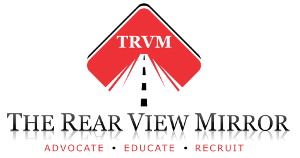As our team began developing MEE, our newest product, we realized at the core of our efforts was this very short but pertinent question, “What is an acceptable risk?” It is a question that all recruiters, insurance companies, safety directors and HR departments must consider when hiring new employees and writing new policies. The answer we often receive is, ‘We just seem to know.’ But is that really enough to hang the reputation of your organization on?
Whether out of naivety, inexperience, or necessity, we have all made allowances for risk and the same holds true to for many recruiting, onboarding and application processes. For example, who hasn’t stayed up an hour later than intended knowing full well that by doing so we may not be our sharpest the next day? We make our decisions after weighing the facts and decide to go to bed or to stay up and watch that extra episode on Netflix, have that one extra drink at the bar or study for tomorrow’s exam a little longer.
The same goes for anyone in the workforce who influences the hiring process. Knowing your company is understaffed may cause you to makes some allowances like doing fewer interviews, not checking references or doing a thorough background check. When we make these allowances, we never have a fair chance to weigh the risk because we haven’t done the proper research. Even if we have done the appropriate work, perhaps we have never clearly defined what an acceptable level of risk actually is, rendering the information we have gathered as useless. What every organization needs to consider are specific guidelines to what will be deemed acceptable risk and what will not.
Simply asking the question will usually be a good start. The number of questions that will follow and the different scenarios to

be taken into consideration will probably surprise you if you have never considered this particular way of thinking. What sorts of convictions or collisions are acceptable to your organization? How many are tolerable? How many references do we need and what information do we want to learn from them? What other products, aptitude tests, or information should we know about an applicant before making an offer? The questions and answers will be different for each company but they are important to consider when ensuring the quality and fit of your employees.
The Making Eligibility Easy (MEE) system standardizes the answers to these questions, allowing you to weigh the risks only once you
have all the facts in front of you. Also, ISB has the fastest turnaround time for gathering this information allowing you to make decisions faster than ever and increase your organization’s efficiency in acquiring talent. Depending on the nature of your business, there may be differing levels of acceptable risk and there will likely be no one more suited to knowing them than yourself. However, by using a golden standard to empower your decisions, you will be able to accurately and confidently hire your next employee for your organization.
About the Author
“Paul Clement began his career at ISB Canada in December of 2012. He has since brought creative solutions to the Product & Vendor Management position and oversees the research and development of new products and their associated strategy. A background in sales allows him to proactively take the lead when ensuring that strategy

